Tuning properties and dynamic range of type 1 vomeronasal receptors
- PMID: 26236183
- PMCID: PMC4501179
- DOI: 10.3389/fnins.2015.00244
Tuning properties and dynamic range of type 1 vomeronasal receptors
Abstract
The mouse vomeronasal organ (VNO) expresses chemosensory receptors that detect intra-species as well as inter-species cues. The vomeronasal neurons are thought to be highly selective in their responses. The tuning properties of individual receptors remain difficult to characterize due to the lack of a robust heterologous expression system. Here, we take a transgenic approach to ectopically express two type 1 vomeronasal receptors in the mouse VNO and characterize their responses to steroid compounds. We find that V1rj2 and V1rj3 are sensitive to two sulfated estrogens (SEs) and can be activated by a broad variety of sulfated and glucuronidated steroids at high concentrations. Individual neurons exhibit narrow range of concentration-dependent activation. Collectively, a neuronal population expressing the same receptor covers a wide dynamic range in their responses to SEs. These properties recapitulate the response profiles of endogenous neurons to SEs.
Keywords: GCaMP2; calcium imaging; glucuronidated steroid; sulfated steroids; transgenic mice; vomeronasal receptor.
Figures
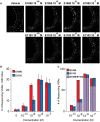

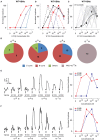
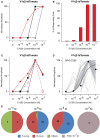
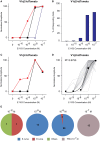

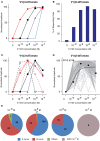

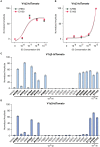
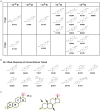
Similar articles
-
Functional Overexpression of Vomeronasal Receptors Using a Herpes Simplex Virus Type 1 (HSV-1)-Derived Amplicon.PLoS One. 2016 May 19;11(5):e0156092. doi: 10.1371/journal.pone.0156092. eCollection 2016. PLoS One. 2016. PMID: 27195771 Free PMC article.
-
Physiological characterization of formyl peptide receptor expressing cells in the mouse vomeronasal organ.Front Neuroanat. 2014 Nov 21;8:134. doi: 10.3389/fnana.2014.00134. eCollection 2014. Front Neuroanat. 2014. PMID: 25484858 Free PMC article.
-
Responses to sulfated steroids of female mouse vomeronasal sensory neurons.Chem Senses. 2012 Nov;37(9):849-58. doi: 10.1093/chemse/bjs068. Epub 2012 Aug 24. Chem Senses. 2012. PMID: 22923146
-
Pheromone detection by mammalian vomeronasal neurons.Microsc Res Tech. 2002 Aug 1;58(3):251-60. doi: 10.1002/jemt.10152. Microsc Res Tech. 2002. PMID: 12203702 Review.
-
Signaling mechanisms and behavioral function of the mouse basal vomeronasal neuroepithelium.Front Neuroanat. 2014 Nov 26;8:135. doi: 10.3389/fnana.2014.00135. eCollection 2014. Front Neuroanat. 2014. PMID: 25505388 Free PMC article. Review.
Cited by
-
Excreted Steroids in Vertebrate Social Communication.J Neurosci. 2018 Apr 4;38(14):3377-3387. doi: 10.1523/JNEUROSCI.2488-17.2018. Epub 2018 Mar 8. J Neurosci. 2018. PMID: 29519850 Free PMC article. Review.
-
Type 3 inositol 1,4,5-trisphosphate receptor is dispensable for sensory activation of the mammalian vomeronasal organ.Sci Rep. 2017 Aug 31;7(1):10260. doi: 10.1038/s41598-017-09638-8. Sci Rep. 2017. PMID: 28860523 Free PMC article.
-
Molecular, cellular, and developmental organization of the mouse vomeronasal organ at single cell resolution.Elife. 2024 Dec 10;13:RP97356. doi: 10.7554/eLife.97356. Elife. 2024. PMID: 39656606 Free PMC article.
-
In-vivo activation of vomeronasal neurons shows adaptive responses to pheromonal stimuli.Sci Rep. 2018 May 31;8(1):8490. doi: 10.1038/s41598-018-26831-5. Sci Rep. 2018. PMID: 29855521 Free PMC article.
-
Sex separation unveils the functional plasticity of the vomeronasal organ in rabbits.Front Mol Neurosci. 2022 Oct 21;15:1034254. doi: 10.3389/fnmol.2022.1034254. eCollection 2022. Front Mol Neurosci. 2022. PMID: 36340690 Free PMC article.
References
Grants and funding
LinkOut - more resources
Full Text Sources
Other Literature Sources
Molecular Biology Databases

